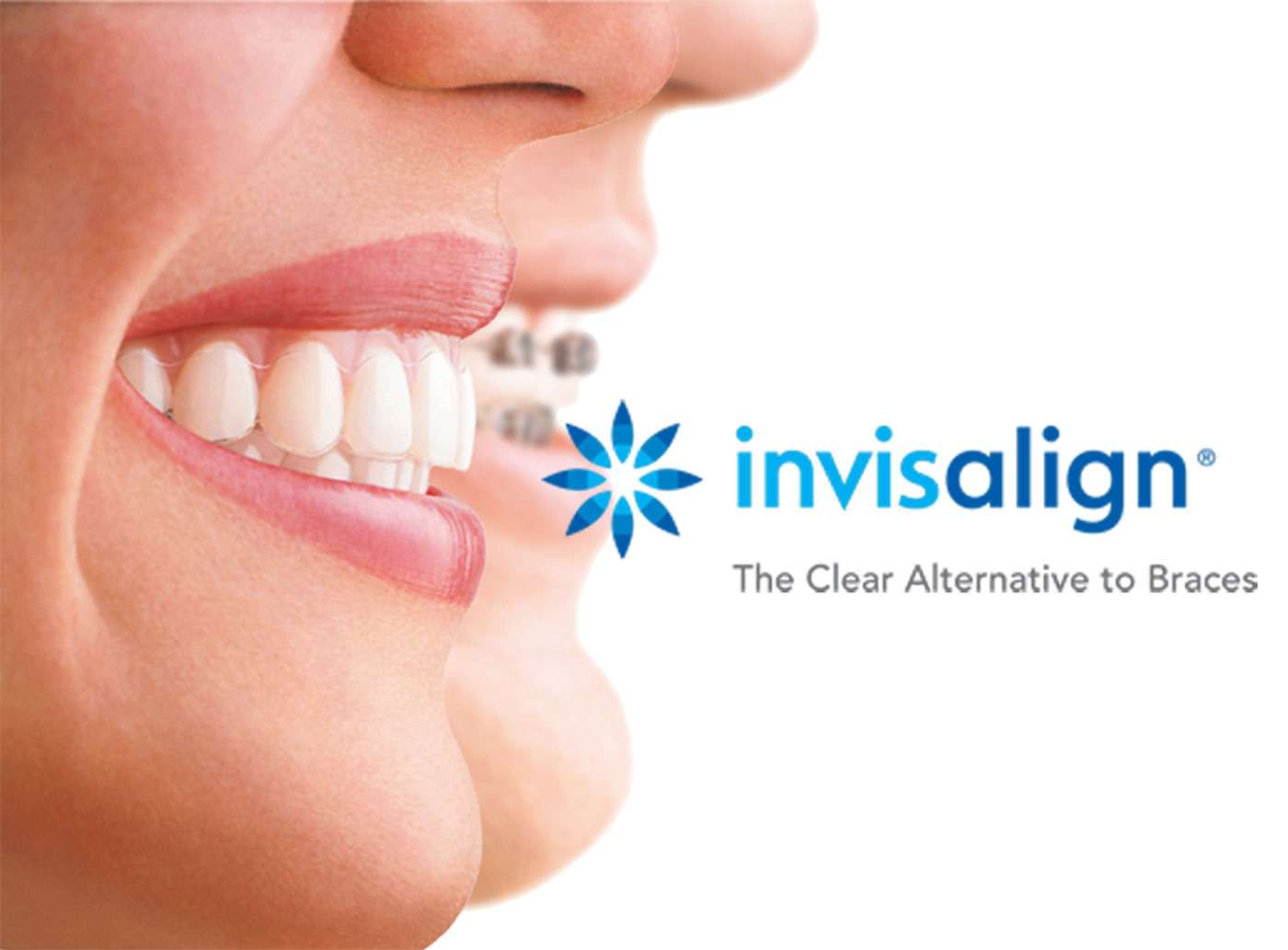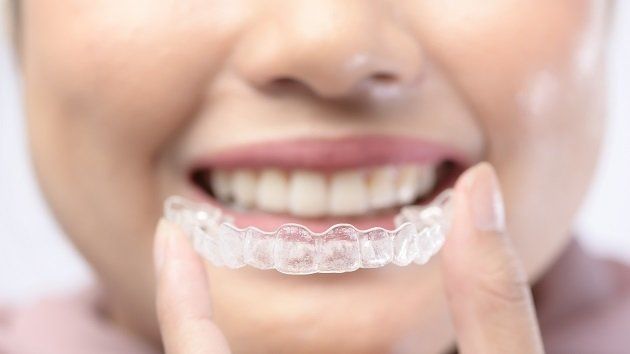Top Reasons to Pick Invisalign Over Other Orthodontic Treatments
Invisalign vs. Conventional Dental braces: Which Alternative Is Right for You?
When thinking about orthodontic therapy, the choice between Invisalign and standard dental braces offers numerous essential variables that warrant careful assessment. Invisalign uses a very discreet choice with removable aligners, while standard dental braces supply a more noticeable yet reliable solution for severe misalignment. Each option encompasses distinct advantages and drawbacks associated with aesthetics, comfort, treatment period, and cost. Understanding these nuances is essential for making a notified decision that aligns with your personal preferences and way of life. The question remains: which option will ideal fulfill your orthodontic demands and assumptions?
Overview of Therapy Choices

On the other hand, conventional dental braces consist of metal braces and cords that are bonded to the teeth. This technique uses continuous stress gradually to attain positioning. While reliable for complex orthodontic problems, standard dental braces require routine gos to for modifications and can posture difficulties in keeping oral health due to the difficulty of cleaning up about wires and braces.
Both options have their advantages, and the selection often hinges on certain oral problems, way of life choices, and person conformity. Ultimately, seeking advice from an orthodontic specialist is critical for establishing the most appropriate therapy strategy customized to specific demands. Recognizing the nuances of each option can significantly influence the overall success of orthodontic therapy.
Visual Factors To Consider
A significant aspect influencing the option between Invisalign and standard braces is the aesthetic appeal each treatment offers. Invisalign aligners are crafted from clear plastic, making them practically unnoticeable when worn. This very discreet look is especially interesting teenagers and grownups who may feel self-conscious about their orthodontic therapy. The capability to preserve a natural smile throughout the alignment procedure can substantially improve the client's confidence in social and expert setups.
On the other hand, standard braces contain steel brackets and cables, which can be extra noticeable. While developments in orthodontic modern technology have led to the advancement of smaller braces and colored elastics, conventional dental braces still maintain an even more conspicuous account. For some individuals, the exposure of dental braces may hinder them from seeking essential treatment.
Eventually, the choice in between Invisalign and traditional braces might hinge on individual preferences regarding aesthetics. Individuals that prioritize discernment frequently lean toward Invisalign, while those that are much less concerned regarding presence may select standard braces. Comprehending the visual effects of each option is vital for making an informed choice that straightens with one's way of life and choices.
Convenience and Convenience

In terms of convenience, Invisalign aligners are removable, enabling patients to appreciate their favored foods without limitation and preserve ideal oral health. Cleaning and flossing are simplified, as the aligners can be taken out throughout these regimens, whereas standard dental braces require mindful steering around cords and brackets.
In comparison, typical braces necessitate routine adjustments, making them much less convenient for those with hectic timetables. Overall, the convenience and convenience of Invisalign make it an attractive selection for numerous people seeking orthodontic treatment.
Therapy Duration and Efficiency
While both Invisalign and traditional braces work in correcting dental imbalances, the period of treatment can differ significantly between both alternatives. Generally, Invisalign therapy can take anywhere from 12 to 18 months, relying on the complexity of the situation. The clear aligners function by progressively shifting teeth into their preferred settings, and normal follow-ups with an orthodontist aid guarantee development continues to be on track.
On the other hand, conventional braces commonly call for a longer dedication, usually ranging from 18 months to three years. This is because of their fixed nature and using cables and braces, which can be much more reliable for intricate instances and extreme misalignments (Invisalign). The treatment performance of traditional braces is well-documented, as they enable precise look these up changes and better control over tooth activity
Ultimately, the selection in between Invisalign and typical dental braces might depend upon both the anticipated treatment duration and the particular oral problems at hand. Consulting with an orthodontist is vital, as they can supply tailored suggestions based upon private requirements, guaranteeing the selected method aligns with wanted end results and timeframes.
Expense Comparison and Insurance Alternatives
Expense plays a considerable role in the decision-making procedure for individuals considering orthodontic treatment, whether choosing Invisalign or traditional dental braces. On average, the cost of Invisalign arrays from $3,000 to his response $8,000, while conventional dental braces commonly set you back between $2,000 and $6,000. Factors affecting these costs consist of the complexity of the instance, the duration of therapy, and geographical place.
Lots of oral insurance coverage strategies provide partial protection for orthodontic therapies, yet the specifics can vary commonly. Usually, conventional dental braces might be more often covered by insurance coverage strategies contrasted to Invisalign, which some insurers categorize as an aesthetic procedure.
Additionally, a number of orthodontic methods supply flexible payment plans, making both treatment choices more available. Individuals need to ask about potential financing options and discount rates for upfront settlements. Evaluating the complete cost, consisting of insurance benefits and layaway plan, is vital for making a notified choice that lines up with both aesthetic preferences and budget considerations.

Conclusion
In summary, the choice between Invisalign and traditional braces depends upon multiple factors, consisting of visual choices, comfort, treatment duration, and cost. Invisalign supplies a very discreet, detachable alternative that promotes dental hygiene and dietary flexibility, while traditional dental braces might be a lot more appropriate for complicated dental concerns and usually come with a lower price factor. Inevitably, appointment with an orthodontist is vital to examine private situations and determine one of the most proper treatment alternative for accomplishing ideal dental placement.
When thinking about orthodontic therapy, the selection between Invisalign and traditional dental braces presents several vital aspects that merit mindful assessment.Contrasting Invisalign and standard braces exposes Full Report distinct treatment choices for orthodontic correction.While both Invisalign and traditional dental braces are reliable in remedying dental imbalances, the period of treatment can differ dramatically between the 2 options.Expense plays a significant function in the decision-making process for people thinking about orthodontic therapy, whether opting for Invisalign or standard braces.In summary, the selection between Invisalign and standard dental braces hinges on numerous factors, including visual preferences, comfort, therapy period, and cost.